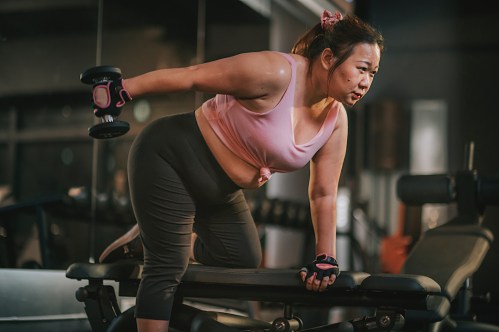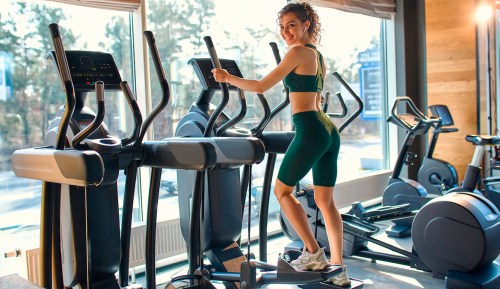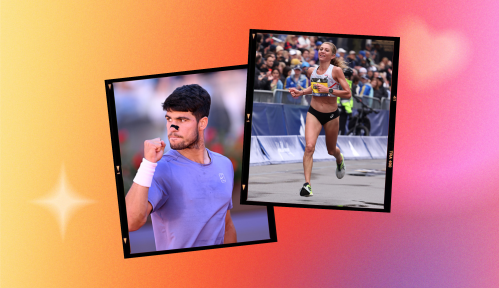Why Training Your Triceps Could Be the Key to Finally Crushing That Full Push-Up
Spoiler alert: You need strong triceps for push-ups, since these three-part muscles on the back of your upper arms assist your chest and shoulders with this total-body move. Here’s how to train ‘em.

The quest to complete a full push-up can be as much a personal goal as it is a butt-kicking, total-body sculpting exercise. It takes chest and shoulder strength to perform, but maybe more surprisingly, it also takes some pretty strong triceps for push-ups.
Experts in This Article
founder of The Ness in New York City
certified functional strength coach and founder of BodyRox
professional dancer and trainer
If your triceps need a bit of a catch up, opt for exercises like dips and kick-backs to build strength in these three-part muscles (hence the name) that run along the backs of your upper arms.
Watch trainer Sydney Lotuaco break down the proper form for triceps dips:
“People tend to hinge forward in their hips, which is bad for your knees and is not going to engage your triceps,” says Lotuaco. Instead, make sure your shoulders are relaxed and not lifted and your fingertips are facing toward your body. Then, press your feet into the floor, keeping your hips and shoulders back, and fingertips facing your booty. As you lower down, your triceps will be fully engaged.
Next, add in shoulder and back engagement with triceps kick-backs:
For triceps kick-backs: “Hinge at your hips and close your ribcage down,” says Colette Dong, founder of The Ness, who demonstrates the right way to do this upper-body exercise in the video above. “Roll those shoulders back so you have one long line between your tailbone and your neck. Pull your elbow back and extend your forearm from your elbow so you get a nice big range.”
Both of these moves really target your triceps by working them in isolation, but if you are really focused on perfecting your push-up form, certified trainer Roxie Jones, creator of BodyRox, recommends focusing on compound movements that build strength in your tris, chest, and shoulders simultaneously. “Your triceps are the assisting muscle in a push-up, and the primary ones are the pectorals [chest] and the deltoids [tops of shoulders],” she says.
To engage all three muscle groups, start by practicing the push-up movement with your hands on an elevated surface and your legs straight to familiarize your body with the full position. “Try to practice the full-range of motion for the push-up,” Jones says. “Elevating the hands reduces the amount of bodyweight you need to push back up to the start position, making it easier to make progress.”
Once you are more familiar with the feel, ensure you have your positioning down. For this, Jones recommends working with a resistance band to better control your chest placement. “Try loop a mini resistance band above the elbows,” she says. “The resistance of the band will help push the chest back up and make the load easier to manage.”
Bottom line here, though, is that the best way to get better at push-ups is by doing them.
Here’s the right way to do a full push-up:
Until you’re able to press your own bodyweight back up, try performing what’s called eccentric push-ups by just focusing on the lowering down part. Start in your high plank, then bend your elbows and lower your body in one long line all the way to the floor. Rather than push yourself back up, just come through hands and knees (or child’s pose) to reset at the top and repeat. “[This way,] you can train the three groups in the eccentric phase—the phase of the exercise where you can really build strength first,” Jones says.
With a little practice and extra focus on your tricep strength, you’ll be ready to move out from modified into a full body push-up position in no time.
Oh hi! You look like someone who loves free workouts, discounts for cutting-edge wellness brands, and exclusive Well+Good content. Sign up for Well+, our online community of wellness insiders, and unlock your rewards instantly.










